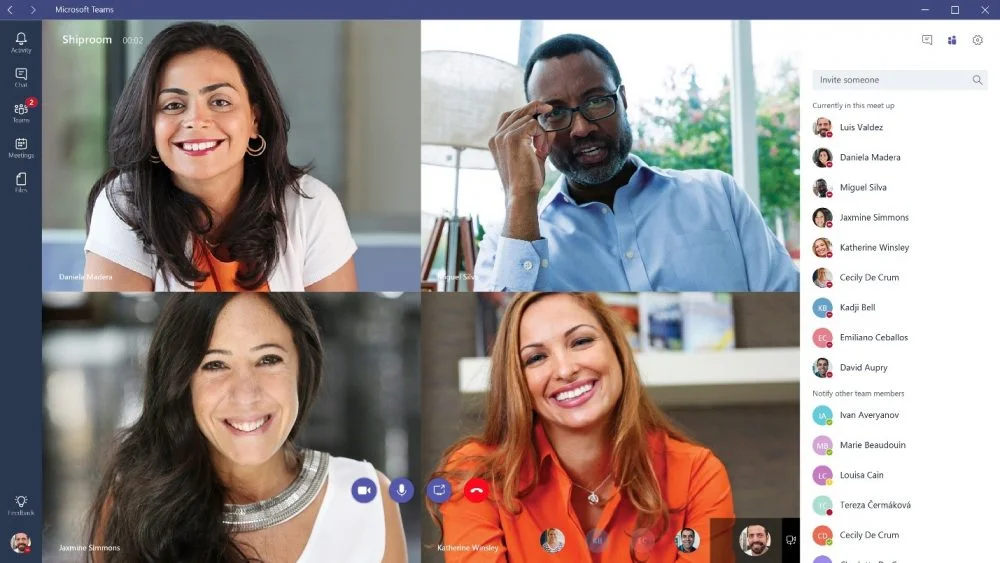In recent years, remote work has become a fundamental part of the modern work landscape, presenting opportunities and challenges. One of the critical elements to address these challenges is the utilization of a robust software stack comprising essential tools that can significantly impact project execution, productivity, and meeting deadlines.
This concise guide will explore communications and collaboration, productivity enhancement, and security within remote work. These aspects are pivotal in ensuring the success of remote work arrangements, as they address common issues remote workers face, including communication gaps, productivity fluctuations, and data security concerns.
To address these challenges, we will introduce you to a selection of top-tier tools such as Google Workspace for seamless communication and collaboration, ClickUp for streamlined task management, Loom for efficient video messaging, Airtable for versatile data organization, ChatGPT for intelligent assistance, and RingCentral for reliable communications. Each tool empowers remote workers to overcome obstacles and thrive in today’s ever-evolving work landscape.
Join us as we navigate the world of remote work tools, uncovering how they can alleviate common issues and enable you to excel in a work-from-home setup.
Mental Health Challenges in Remote Work
Remote work, while offering flexibility and convenience, can bring about mental health challenges that can significantly impact an individual’s well-being and productivity. Perhaps the most prominent challenge is the sense of isolation and loneliness that remote workers may experience. Without the physical presence of coworkers, the daily camaraderie, and the casual office interactions, individuals working remotely can often find themselves feeling disconnected and isolated, sometimes even leading to feelings of depression.
Addressing this issue requires effective communication and collaboration tools. Platforms like Slack and Microsoft Teams facilitate real-time communication and virtual water cooler chats, providing remote workers a sense of connection to their colleagues. Additionally, regular video meetings through tools like Zoom, RingCentral, and Google Meet offer face-to-face interactions, even when team members are miles apart. These tools are crucial in strengthening team bonds and combating the feelings of isolation plaguing remote workers.
Another challenge that impacts mental health in remote work is the relentless pressure to prove productivity. The absence of a physical office presence often leads remote workers to overcompensate, resulting in burnout and anxiety. To alleviate this pressure and foster a healthier work environment, productivity-enhancing tools like ClickUp and Asana can help remote workers manage their tasks and deadlines more effectively, reducing the stress associated with remote work. Remote work can become more fulfilling and sustainable by addressing these mental health challenges while also considering communication, collaboration, productivity, and security.
Managing Distractions in Remote Work
One of the pervasive challenges remote workers face is the constant battle against distractions. At home, the line between professional and personal life often blurs, making it challenging to stay focused on work. Household chores, family demands, and the allure of social media can easily divert attention away from tasks.
**Solution: To combat distractions effectively, productivity-enhancing tools like FreeUp and Airtable can be invaluable. FreeUp helps remote workers track their work hours, providing insights into time spent and identifying areas where they may be overcommitting. Airtable can streamline task management and break down projects into manageable pieces, making it easier to stay on track.
Effective communication and collaboration tools also play a role in mitigating distractions. Clear communication using platforms like Slack or Microsoft Teams ensures remote team members understand their responsibilities and deadlines. Virtual Zoom or Google Meet meetings allow for face-to-face interactions, fostering a sense of accountability.
Regarding security, it’s essential to use tools and software that prioritize data protection, as distractions can lead to lapses in security. Robust cybersecurity measures, such as VPNs and password managers, help safeguard sensitive information, ensuring that distractions don’t compromise data security.
By addressing the issue of distractions in remote work through these tools, organizations and individuals can create a more focused and secure work environment while maintaining open lines of communication, enhancing collaboration, and boosting overall productivity.
Managing Communication and Collaboration Difficulties in Remote Work
Effective communication and seamless collaboration are the cornerstones of any successful remote work setup. However, remote work can introduce unique challenges, such as miscommunication, response delays, and difficulty coordinating tasks across dispersed teams. These issues can hinder productivity and teamwork, making employing the right tools and strategies crucial.
Solution: A central tool for tackling these challenges is Slack, which provides real-time messaging and channels for team communication. It enables quick and efficient communication, reducing the chances of miscommunication and ensuring that team members can stay connected. Similarly, Microsoft Teams offers a robust platform for virtual meetings, file sharing, and project collaboration, enhancing teamwork regardless of geographical distances.
Platforms like Asana and ClickUp can help teams manage tasks, set priorities, and track progress transparently to boost collaboration and streamline productivity. These tools allow for creating task lists, assigning responsibilities, and monitoring project timelines, promoting a collaborative and goal-oriented approach.
Security is paramount when sharing sensitive information in remote work setups. Employing secure communication tools like Zoom or Google Meet for video conferences protects confidential discussions. Additionally, operating a virtual private network (VPN) and encrypted messaging tools like Signal strengthens data security, guarding against potential breaches.
By addressing communication and collaboration difficulties with these tools, remote teams can foster more robust connections, enhance productivity, and maintain the security of their sensitive information, creating a more efficient and cohesive remote work environment.

Dealing with Technical Difficulties in Remote Work
Technical glitches can quickly disrupt remote work, causing frustration and productivity loss. Whether it’s unreliable internet connections, software malfunctions, or hardware issues, remote workers often grapple with technical difficulties that hinder their ability to perform effectively.
Solution: To address technical difficulties effectively, having robust communication and collaboration tools is essential. Platforms like Slack and Microsoft Teams provide instant messaging capabilities, allowing remote team members to troubleshoot issues and seek help from colleagues quickly. These tools facilitate real-time communication, helping resolve technical problems promptly.
In case of internet connectivity issues, using a virtual private network (VPN) can enhance security while ensuring a stable connection. VPNs like ExpressVPN or NordVPN encrypt data and offer a range of servers to choose from, improving connection stability.
For hardware or software problems, remote desktop access tools like TeamViewer or AnyDesk enable IT support teams to remotely access and troubleshoot a user’s device, eliminating the need for in-person assistance. This saves time and reduces the potential exposure to security risks associated with on-site technical support.
Maintaining up-to-date software and conducting regular system maintenance is crucial to bolster productivity. Tools like Patch My PC and CCleaner help automate software updates and optimize system performance, reducing the likelihood of technical difficulties.
By leveraging these tools and best practices, remote workers can navigate technical challenges more effectively, ensuring a smoother and more secure remote work experience while promoting communication, collaboration, and productivity.
Dealing with Work-Life Imbalance in Remote Work
Remote work can sometimes blur the boundaries between work and personal life, making it challenging for individuals to disconnect and maintain a healthy work-life balance. The absence of a physical office and the convenience of working from home can lead to longer work hours and increased stress levels.
Strategies for Balance: Productivity-enhancing tools like FreeUp can be invaluable in managing work-life balance. With FreeUp, remote workers can monitor their work hours and gain insights into their commitments. It’s crucial to set clear boundaries for work hours and personal time, ensuring there’s a dedicated space for relaxation and personal activities. This practice reduces the risk of burnout and fosters a healthier work-life balance.
Communication and collaboration tools like Slack and Microsoft Teams also play a role in addressing this challenge. Encouraging teams to respect set work hours and avoid sending non-urgent messages outside of those times can help remote workers disconnect and recharge. Employing features like the “Do Not Disturb” mode in these tools can further support this effort.
Security is critical when dealing with work-life imbalance, as remote workers might inadvertently mix personal and work-related activities on the same devices. Strong security measures, such as VPNs and password managers, help protect confidential information while separating work and personal activities.
By utilizing these tools and strategies, remote workers can regain control over their work-life balance, allowing for dedicated personal time, reducing stress, and ultimately promoting productivity and security in their remote work environment.
Conclusion: Navigating the Challenges of Remote Work with Smart Tools
In the ever-evolving landscape of remote work, the challenges are diverse, but they can be effectively managed with the right tools and strategies. This guide has explored four key challenges remote workers encounter: mental health concerns, distractions, communication and collaboration difficulties, and work-life imbalance.
From addressing the sense of isolation through tools like Slack and Microsoft Teams to combating distractions with productivity-enhancing applications like Airtable and ClickUp, we’ve seen how technology can play a pivotal role in improving remote work conditions. Additionally, ensuring data security through VPNs, password managers, and secure communication platforms like Zoom and Google Meet is paramount.
Furthermore, we discussed the significance of maintaining work-life balance, emphasizing the need for clear boundaries and time-tracking tools like FreeUp to prevent burnout and foster well-being.
In today’s remote work environment, these challenges are not insurmountable obstacles but opportunities for growth and improvement. By leveraging the right tools and adhering to best practices, individuals and organizations can create a more productive, secure, and balanced remote work experience that aligns with the demands of the modern world.
Related Blog Posts:
Essential Tools and Software to Master Remote Work


Recent Comments